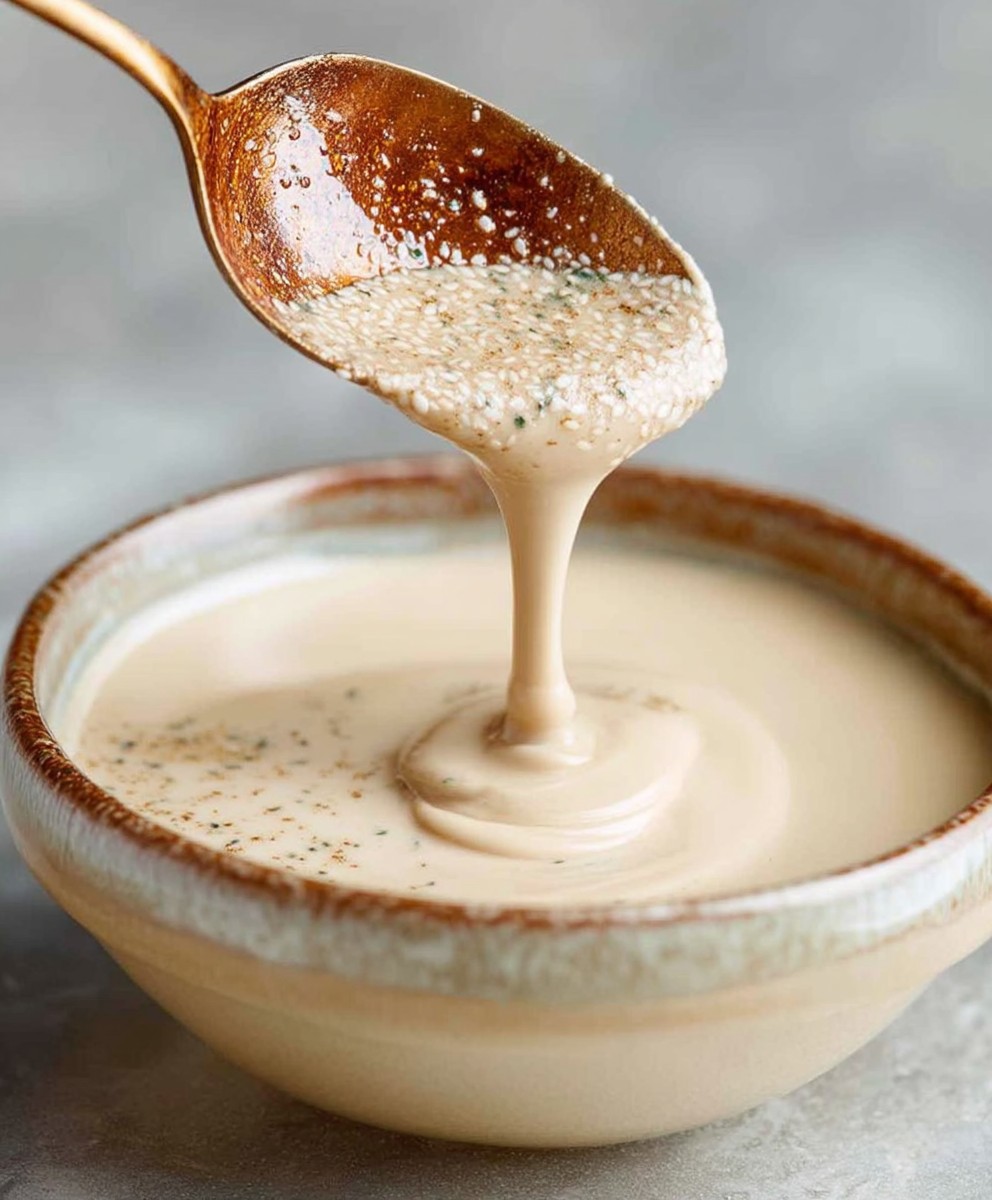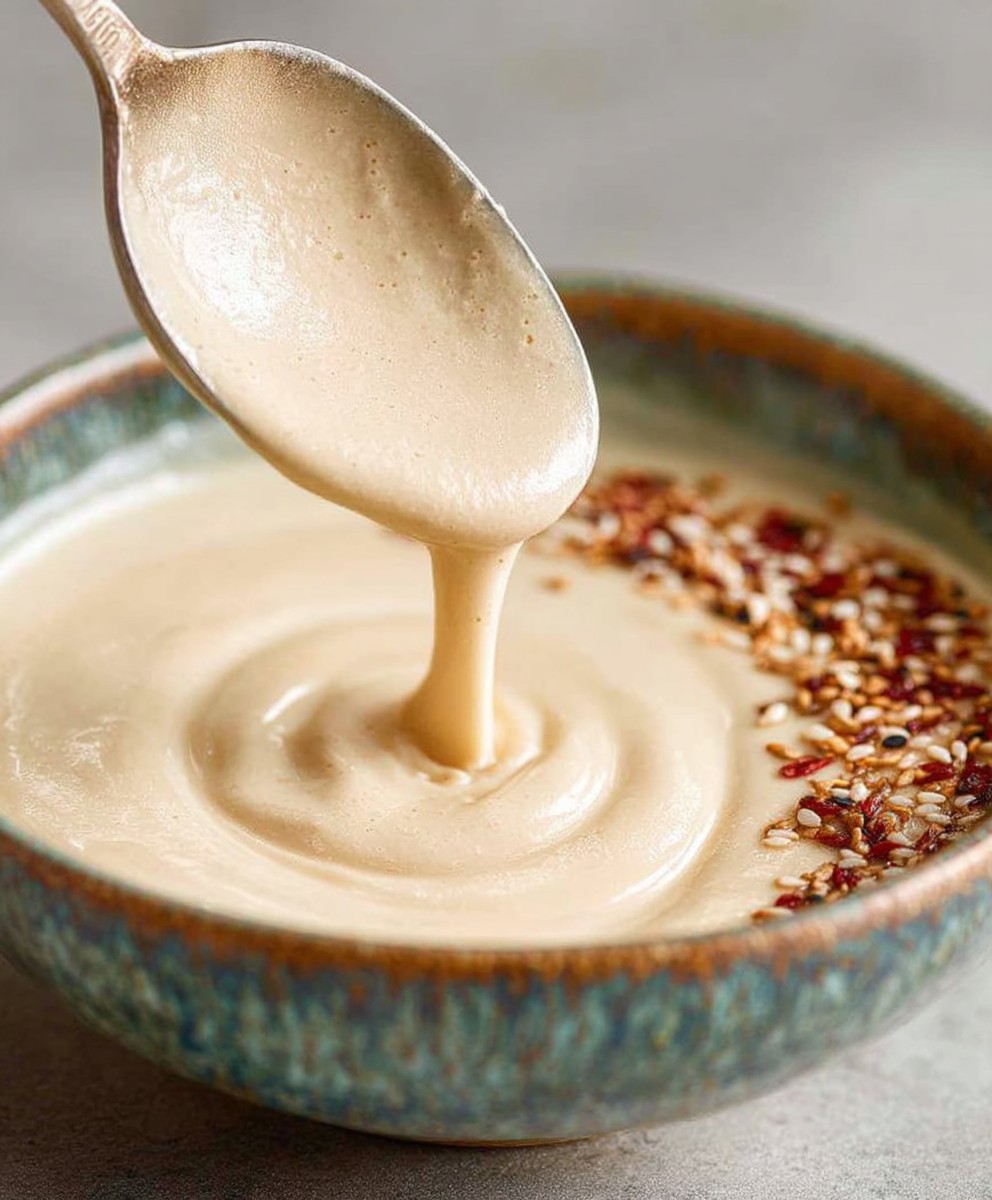Tahini sauce, that creamy, nutty elixir, is about to become your new kitchen obsession. Forget bland salads and boring dips we’re diving headfirst into the world of sesame seed magic! Have you ever wondered how a simple paste could elevate so many dishes from ordinary to extraordinary? I certainly have, and after years of experimenting, I’m thrilled to share my foolproof recipe with you.
This versatile sauce boasts a history as rich and complex as its flavor. Originating in the Middle East and parts of North Africa, tahini has been a culinary staple for centuries. It’s more than just a condiment; it’s a cultural cornerstone, deeply woven into the fabric of cuisines from hummus to halva. The ancient process of grinding sesame seeds into a smooth, flowing paste has been perfected over generations, resulting in the delicious tahini sauce we know and love today.
But what is it about tahini that makes it so irresistible? It’s the perfect balance of earthy and subtly sweet, with a luxurious texture that coats the palate. People adore it for its incredible versatility. It’s quick to prepare, requiring only a handful of ingredients, and can be used in countless ways. Whether you’re drizzling it over roasted vegetables, using it as a base for salad dressings, or swirling it into your favorite dips, tahini adds a depth of flavor that’s simply unmatched. Get ready to unlock the secrets to making the perfect tahini sauce and transform your meals!
Ingredients:
- 1 cup hulled sesame seeds
- 1/4 cup neutral-flavored oil (such as grapeseed, sunflower, or light olive oil)
- 1-2 tablespoons water (optional, for thinning)
- 1/4 teaspoon salt (or to taste)
Preparing the Sesame Seeds:
The key to amazing tahini is perfectly toasted sesame seeds. Don’t skip this step, and don’t rush it! We want them golden and fragrant, not burnt.
- Toasting the Sesame Seeds: Spread the sesame seeds in a single layer on a large, dry skillet. Place the skillet over medium-low heat. This low and slow approach is crucial.
- Constant Stirring is Key: Stir the sesame seeds constantly with a spatula or wooden spoon. This prevents burning and ensures even toasting. Pay close attention; sesame seeds can go from golden to burnt very quickly.
- Visual Cues: Look for the sesame seeds to turn a light golden brown color. They should also become fragrant, releasing a nutty aroma. This process usually takes about 5-7 minutes, but it can vary depending on your stove.
- Immediate Removal: Once the sesame seeds are toasted, immediately remove them from the hot skillet and transfer them to a cool plate or baking sheet. Leaving them in the hot skillet will cause them to continue cooking and potentially burn. Spread them out to cool quickly.
- Cooling Completely: Allow the sesame seeds to cool completely before proceeding to the next step. Warm sesame seeds will release their oils prematurely and can result in a clumpy tahini.
Blending the Tahini:
Now for the fun part! A high-powered blender or food processor is your best friend here. Patience is also key; it might take a few minutes to get that perfectly smooth consistency.
- First Blend (Dry): Place the cooled, toasted sesame seeds into your blender or food processor. Blend on high speed until the sesame seeds are finely ground and form a dry, crumbly mixture. This may take a minute or two, and you may need to stop and scrape down the sides of the blender or food processor a few times.
- Adding the Oil: With the blender or food processor running, slowly drizzle in the oil. Continue blending until the mixture starts to come together and form a thick paste.
- Patience is a Virtue: This is where patience comes in. Keep blending! The mixture will likely go through several stages: crumbly, pasty, and then finally, smooth and creamy. It can take several minutes of blending to achieve the desired consistency. Stop and scrape down the sides as needed.
- Adjusting Consistency (Optional): If your tahini is too thick, add water, one tablespoon at a time, while blending. Blend until the tahini reaches your desired consistency. Remember, a little water goes a long way.
- Adding Salt: Add the salt and blend for a few more seconds to incorporate it evenly. Taste and adjust the salt as needed.
- Final Blend: Give the tahini one final blend to ensure everything is well combined and smooth.
Troubleshooting and Tips:
Sometimes, things don’t go exactly as planned. Here are some common issues and how to fix them:
- Tahini is too thick: Add water, one tablespoon at a time, while blending, until you reach your desired consistency.
- Tahini is too bitter: This usually means the sesame seeds were over-toasted. Unfortunately, there’s not much you can do to fix this. Be extra careful when toasting the sesame seeds next time. You can try adding a touch more oil or a tiny bit of sweetener (like honey or maple syrup) to mask the bitterness, but it won’t completely eliminate it.
- Tahini is grainy: This could be due to not blending long enough or using a low-powered blender or food processor. Keep blending! If your blender isn’t powerful enough, you might need to invest in a better one for truly smooth tahini. Soaking the sesame seeds in water for 30 minutes before toasting can also help.
- Tahini is separating: This is normal! The oil and solids in tahini naturally separate over time. Simply stir the tahini well before using it to re-combine everything.
Storage:
Proper storage is essential to keep your homemade tahini fresh and delicious.
- Airtight Container: Transfer the tahini to an airtight container. A glass jar is ideal.
- Refrigeration: Store the tahini in the refrigerator. This will help prevent it from going rancid.
- Shelf Life: Homemade tahini will last for about 2-3 weeks in the refrigerator.
- Check for Spoilage: Before using, check the tahini for any signs of spoilage, such as a sour smell or mold. If you notice any of these, discard the tahini.
Serving Suggestions:
Tahini is incredibly versatile! Here are just a few ideas for how to use it:
- Hummus: Tahini is a key ingredient in hummus. Add it to your favorite hummus recipe for a creamy and authentic flavor.
- Dips and Sauces: Use tahini as a base for dips and sauces. Combine it with lemon juice, garlic, and herbs for a delicious dipping sauce for vegetables or pita bread.
- Salad Dressings: Whisk tahini with lemon juice, olive oil, and spices for a creamy and flavorful salad dressing.
- Sandwich Spreads: Spread tahini on sandwiches or wraps for a nutty and savory flavor.
- Vegetable Roasting: Toss vegetables with tahini before roasting for a delicious and slightly nutty flavor.
- Desserts: Believe it or not, tahini can also be used in desserts! Add it to cookies, brownies, or even ice cream for a unique and nutty flavor.
- Drizzled over Falafel: A classic pairing! Drizzle tahini sauce generously over falafel for a delicious and satisfying meal.
- Baba Ghanoush: Another classic Middle Eastern dip, baba ghanoush features roasted eggplant and tahini.
Variations:
Want to experiment? Here are a few variations you can try:
- Roasted Garlic Tahini: Roast a head of garlic and add the cloves to the blender along with the sesame seeds and oil.
- Lemon Tahini: Add lemon zest and juice to the tahini while blending for a bright and citrusy flavor.
- Spicy Tahini: Add a pinch of cayenne pepper or a few drops of hot sauce to the tahini for a spicy kick.
- Sweet Tahini: Add a touch of honey or maple syrup to the tahini for a sweeter flavor.
Why Homemade Tahini is Better:
While you can certainly buy tahini at the store, making it at home has several advantages:
- Freshness: Homemade tahini is always fresher than store-bought tahini.
- Flavor: You have complete control over the flavor of your tahini. You can adjust the toasting level of the sesame seeds and add your own spices and flavorings.
- Ingredients: You know exactly what’s going into your tahini. No preservatives or additives!
- Cost: Making tahini at home can be more cost-effective than buying it at the store, especially if you buy sesame seeds in bulk.
Choosing the Right Sesame Seeds:
The quality of your sesame seeds will greatly impact the flavor of your tahini. Here’s what to look for:
- Hulled vs. Unhulled: Hulled sesame seeds are the most common type used for tahini. They have a milder flavor than unhulled sesame seeds. Unhulled sesame seeds have a slightly more bitter flavor and a coarser texture.
- Color: Look for sesame seeds that are a consistent color, either white or light beige. Avoid sesame seeds that are discolored or have dark spots.
- Smell: The sesame seeds should have a fresh, nutty aroma. Avoid sesame seeds that smell stale or rancid.
- Source: If possible, choose sesame seeds from a reputable source.
Equipment Recommendations:
Having the right equipment can make the tahini-making process much easier.
- High-Powered Blender or Food Processor: A high-powered blender or food processor is essential for achieving a smooth and creamy tahini. Vitamix, Blendtec, and Cuisinart are all good brands to consider.
- Skillet: A large skillet is needed for toasting the sesame seeds. A non

Conclusion:
This isn’t just another sauce recipe; it’s a gateway to a world of flavor! I truly believe this tahini sauce recipe is a must-try for anyone looking to elevate their meals with a creamy, nutty, and incredibly versatile condiment. From its simple preparation to its endless possibilities, it’s a game-changer in the kitchen.
Why is it a must-try? Because it’s ridiculously easy! Seriously, you can whip this up in under five minutes with ingredients you likely already have on hand. But more than that, it’s the flavor explosion that will keep you coming back for more. The rich, earthy notes of the tahini are perfectly balanced with the bright lemon juice, garlic’s subtle bite, and a touch of sweetness. It’s a symphony of tastes that will tantalize your taste buds.
And the versatility? Oh, the versatility! This isn’t just for falafel (though it’s amazing with falafel!). Think beyond the usual and drizzle it over roasted vegetables like broccoli, cauliflower, or sweet potatoes for an instant flavor boost. Use it as a salad dressing for a creamy, dairy-free alternative to traditional vinaigrettes. Spread it on sandwiches or wraps for an extra layer of deliciousness. It’s even fantastic as a dip for crudités or pita bread.
Looking for serving suggestions? I love to pair this tahini sauce with grilled chicken or fish. The creamy texture and nutty flavor complement the smoky char perfectly. You can also use it as a base for a flavorful marinade. Simply add some herbs, spices, and a little olive oil, and you’ve got a fantastic marinade for chicken, tofu, or vegetables.
Want to get creative with variations? Go for it! Add a pinch of smoked paprika for a smoky twist. Stir in some chopped fresh herbs like parsley, cilantro, or dill for a burst of freshness. A drizzle of honey or maple syrup can add a touch of sweetness. For a spicier kick, add a pinch of cayenne pepper or a dash of your favorite hot sauce. The possibilities are truly endless!
I’ve personally experimented with so many variations, and I’m constantly amazed at how adaptable this recipe is. One of my favorites is adding a roasted red pepper for a vibrant color and a slightly sweet, smoky flavor. Another is incorporating a tablespoon of za’atar for an earthy, herbaceous twist. Don’t be afraid to experiment and find your own perfect combination!
This tahini sauce is also incredibly healthy. Tahini is a great source of calcium, iron, and healthy fats. It’s also packed with antioxidants and other beneficial nutrients. So, you can feel good about indulging in this delicious sauce.
I’m so confident that you’ll love this recipe that I urge you to try it out as soon as possible. It’s a simple, delicious, and versatile sauce that will quickly become a staple in your kitchen.
Once you’ve made it, I’d absolutely love to hear about your experience! Did you try any variations? What did you serve it with? Share your thoughts and photos in the comments below. Let’s inspire each other with our culinary creations! I can’t wait to see what you come up with. Happy cooking!
Tahini Sauce: The Ultimate Guide to Making and Using It
Make creamy, delicious tahini at home with this easy recipe. Perfect for hummus, dips, dressings, and more!
Ingredients
- 1 cup hulled sesame seeds
- 1/4 cup neutral-flavored oil (such as grapeseed, sunflower, or light olive oil)
- 1-2 tablespoons water (optional, for thinning)
- 1/4 teaspoon salt (or to taste)
Instructions
- Spread the sesame seeds in a single layer on a large, dry skillet. Place the skillet over medium-low heat.
- Stir the sesame seeds constantly with a spatula or wooden spoon.
- Look for the sesame seeds to turn a light golden brown color. They should also become fragrant, releasing a nutty aroma. This usually takes about 5-7 minutes.
- Once the sesame seeds are toasted, immediately remove them from the hot skillet and transfer them to a cool plate or baking sheet. Spread them out to cool quickly.
- Allow the sesame seeds to cool completely before proceeding to the next step.
- Place the cooled, toasted sesame seeds into your blender or food processor. Blend on high speed until the sesame seeds are finely ground and form a dry, crumbly mixture. This may take a minute or two, and you may need to stop and scrape down the sides of the blender or food processor a few times.
- With the blender or food processor running, slowly drizzle in the oil. Continue blending until the mixture starts to come together and form a thick paste.
- Keep blending! The mixture will likely go through several stages: crumbly, pasty, and then finally, smooth and creamy. It can take several minutes of blending to achieve the desired consistency. Stop and scrape down the sides as needed.
- If your tahini is too thick, add water, one tablespoon at a time, while blending. Blend until the tahini reaches your desired consistency. Remember, a little water goes a long way.
- Add the salt and blend for a few more seconds to incorporate it evenly. Taste and adjust the salt as needed.
- Give the tahini one final blend to ensure everything is well combined and smooth.
Notes
- Tahini is too thick: Add water, one tablespoon at a time, while blending, until you reach your desired consistency.
- Tahini is too bitter: This usually means the sesame seeds were over-toasted. Be extra careful when toasting the sesame seeds next time. You can try adding a touch more oil or a tiny bit of sweetener (like honey or maple syrup) to mask the bitterness, but it won’t completely eliminate it.
- Tahini is grainy: This could be due to not blending long enough or using a low-powered blender or food processor. Keep blending! If your blender isn’t powerful enough, you might need to invest in a better one for truly smooth tahini. Soaking the sesame seeds in water for 30 minutes before toasting can also help.
- Tahini is separating: This is normal! The oil and solids in tahini naturally separate over time. Simply stir the tahini well before using it to re-combine everything.
- Store in an airtight container in the refrigerator for 2-3 weeks.
- Use in hummus, dips, salad dressings, sandwich spreads, or drizzled over falafel.
- Try roasted garlic, lemon, spicy, or sweet tahini.

